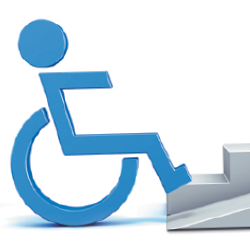|
exhibiting 101
 Crisis Management
Be prepared for common show-floor snafus by having the necessary supplies on hand. By Betsy Earle
I wouldn't necessarily describe myself as a superstitious person, but I've been in this industry long enough to believe there is some legitimacy to Murphy's Law. Given the number of intricate factors that go into exhibiting – shipping, installation and dismantle, staff travel, and technology, to name a few – it's inevitable that things will go haywire sooner rather than later. And I've seen and lived through it all, from MIA crates to a rookie booth staffer slicing her finger down to the bone while preparing a platter of food samples.
As the individuals in charge of running these snafu-prone operations, it's upon us exhibit managers to continually plan for the best but prepare for the worst. With that mandate in mind, here is a rundown of the "in case of emergency" kits I recommend everyone prepare and bring to the show floor to handle unexpected disasters of any stripe and scale. I&D Incident Kit Your I&D incident kit should include everything necessary to fix or mend your booth during setup and teardown. We keep ours in our "gang box," which is home to all the tools and literature needed for I&D. Since the contents of an I&D emergency kit aren't synonymous with those of a gang box – and given the fact that exhibitry issues can arise during show hours – we keep ours in its own bin and store it in the booth so it is available for spur-of-the-moment problems. I always make sure my I&D incident kits include the following: An inexpensive soldering gun – A soldering gun is one of the few safe ways to poke a hole in a silicone-edge graphic without causing it to run and tear. You might need to do this when you have to run an electrical cable for a light or monitor through the graphic when there is nowhere else to tuck it. Mr. Clean Magic Erasers – Magic Erasers do exactly as their name implies: safely remove dirt, scuffs, and stains from myriad hard surfaces. Bleach pens – Yes, these are great for when staffers spill coffee or ketchup on their white shirts, but they also work wonders on pop-up exhibitry when used carefully. Blank pieces of black and/or white PVC board – We've all been in situations where a graphic just didn't look right in a certain spot or we've needed to add an extra reception counter on the fly. Because they can be easily cut to size on site and quickly put in place with hook-and-loop fastener, extra pieces of PVC and/or Sintra are a great way to cover holes and damaged graphics. Hook-and-loop fastener – If you need to order extra signage at the last minute but don't have a means to hang it, hook-and-loop fastener will often work in a pinch. Magnets – Adhesive-backed magnetic discs, strips, and tape are also useful for hanging signage and other lightweight elements when hook-and-loop fastener isn't an option. Cable ties – In addition to their namesake usage, cable ties are a discreet and efficient way to quickly mend broken pop-up frames or hold two components together that are missing a connector. Multiple extension cords and power strips – Renting an extension cord or power strip from the general service contractor can cost $25 or more, so having a few extras on hand will save time, money, and stress. Just be sure your supplies have three prongs and are UL rated. Screwdrivers and hex tools – It's always a good idea to have a number of multibit screwdrivers and one or two complete sets of hex tools, aka Allen wrenches or Allen keys, so multiple people can tackle easy I&D tasks at the same time. Fire extinguisher – I keep at least one certified fire extinguisher in my gang box in case of any electrical flare-ups during install. After setup, it gets moved to the reception desk and/or an area where blazes are most likely to occur, such as a food-prep counter or product-demo space. Sewing kit – Seasoned exhibit managers know a sewing kit is useful for everything from mending a hole in a fabric graphic to hemming an executive's floor-grazing pants. Backup art files – A thumb drive loaded with high-resolution, print-ready files of your exhibit's graphics will save you precious time should a panel or SEG be damaged beyond repair or the crate containing your graphics goes missing.
Having gone through the aforementioned staffer finger-slicing incident, I believe that it's important to keep a first-aid kit in your booth stocked with multiple sizes of adhesive bandages, gauze, dressing, medical tape, antibacterial ointment, antiseptic wipes, scissors, nitrile gloves, an instant cold compress, and a breathing barrier for performing CPR. You can either purchase these items individually, or there are many varieties of packaged kits available. And while it isn't mandatory to have ibuprofen and aspirin on demand for your booth staff, having something available for them is much easier and less expensive than sending someone to purchase a bottle on site. In regard to storage, I prefer to keep my first-aid kit in my gang box so it's available during I&D and then store it in an easily accessible location during the show, such as in a reception desk or prominently displayed in a staffer break area. And if I know that any individuals who will be working the booth are trained in first aid, I make sure to indicate this on the team contact sheet so staffers know who is qualified to assist in an emergency. Keep in mind that a first-aid kit is just that: supplies to immediately address an injury. Its contents are not comprehensive enough to adequately treat anything more than the simplest of accidents, and under no circumstances should an in-booth "patch job" be considered a substitute for proper medical care. If a staffer or booth visitor experiences anything more severe than a paper cut, use the tools in your kit to stop the bleeding and make sure the individual is stable, and then assist him or her in finding professional care on site or at a nearby medical facility. Technology Tragedy Kit Exhibiting is increasingly reliant on digital tools that seem to have a way of going on the fritz at the most inopportune times. And when you're not confronted with a glitch-ridden router, you're moving a kiosk to a location farther away from an Ethernet hook-up or adding a last-minute tablet to your product-demo station. That's why I always bring extra Ethernet, HDMI, and audiovisual cables, as well as charging cords for iOS- and Android-based mobile devices. Since you never know just how far a distance these cords may need to run, I advise either purchasing the longest length you anticipate you'll ever need (after all, it's better to have too much than too little) or procuring a variety of lengths. I also bring an HDMI-to-Thunderbolt dongle just in case someone shows up with a Macbook that needs to be connected to a monitor that isn't Apple-ready. Finally, I make sure that any video content that will play on the booth's monitors has been backed up to external thumb drives. On the subject of backing things up: I'm a strong proponent of keeping important files, e.g., contact sheets, I&D plans, order confirmations, and other vital forms, accessible sans internet, whether that be on a thumb drive or saved directly to my phone or computer. Truth be told, I also try to have hard-copy printouts with me whenever feasible. Yes, it's possible to email these items to yourself or store them in the cloud, but the simple reality is you just never know when a server may crash or your laptop may suddenly stop working or go missing. The day I accepted the fact that no trade show will go perfectly was the day I was able to truly and fully embrace my job. After all, it's not about flawless execution, but more about thinking on your feet and solving crises calmly and efficiently as they come your way. If you're properly prepared and your emergency kits are stocked and in place, you'll maintain your peace of mind and continue to love what you do. E  Betsy Earle, CTSM
Betsy Earle, CTSMmanaging director and founder of Event Driven Solutions LLC. Earle obtained her MBA at the University of Miami and earned her Diamond-level CTSM designation in 2018. Exhibiting101@exhibitormagazine.com
|
|
||||||||||||||
|
||||||||||||||||||||||||||||
|
|
||||||||||||||||||||||||||||
|
TOPICS Measurement & Budgeting Planning & Execution Marketing & Promotion Events & Venues Personal & Career Exhibits & Experiences International Exhibiting Resources for Rookies Research & Resources |
MAGAZINE Subscribe Today! Renew Subscription Update Address Digital Downloads Newsletters Advertise |
FIND IT Exhibit Producers Products & Services All Companies Get Listed |
EXHIBITORLIVE Sessions Exhibit Hall Exhibit at the Show Registration |
ETRAK Sessions Certification F.A.Q. Registration |
EDUCATION WEEK Overview Sessions Hotel Registration |
CERTIFICATION The Program Steps to Certification Faculty and Staff Enroll in CTSM Submit Quiz Answers My CTSM |
AWARDS Exhibit Design Awards Portable/Modular Awards Corporate Event Awards Centers of Excellence |
NEWS Associations/Press Awards Company News International New Products People Shows & Events Venues & Destinations EXHIBITOR News |
||||||||||||||||||||
|
||||||||||||||||||||||||||||






